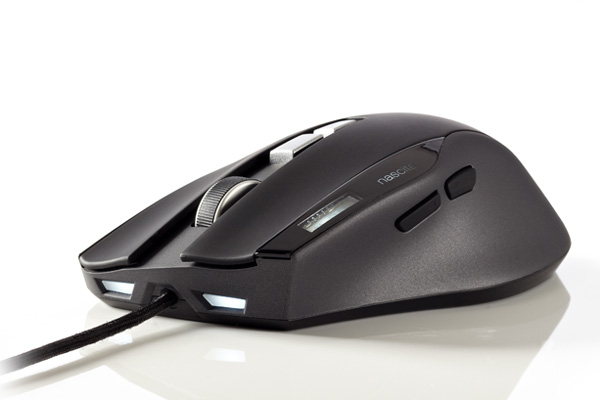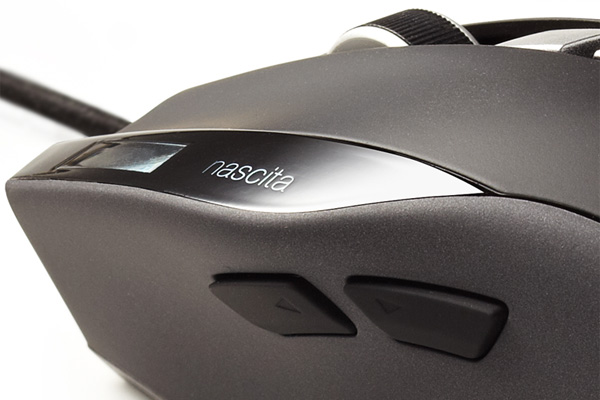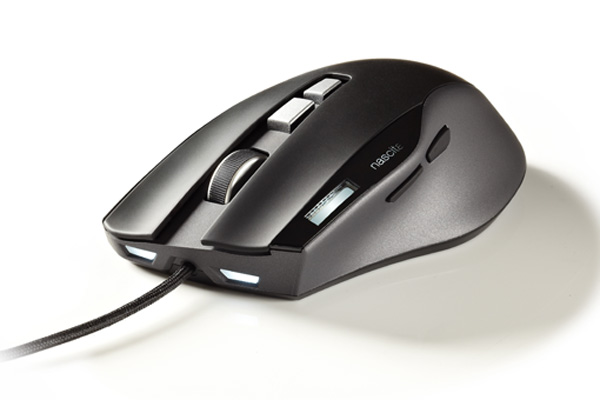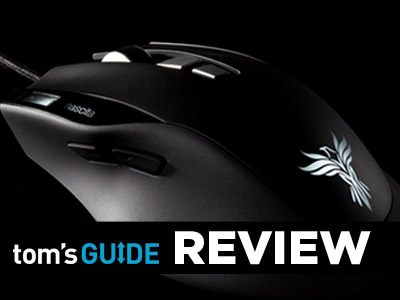Tom's Guide Verdict
In spite of a few small flaws, the Nascita is a gorgeous mouse.
Pros
- +
Supremely comfortable design
- +
Suited for most hand sizes and grip types
- +
Simple, driverless installation
- +
Excellent button placement
Cons
- -
No profile software
- -
Relatively high price
Why you can trust Tom's Guide
The Feenix Nascita ($97) is not the most expensive gaming mouse on the market, but its price tag far exceeds the norm for a mouse with its functionality. Rather than push the boundaries of gaming mice, the Nascita takes a simple idea — the basic gaming mouse — and refines it into its most elegant form.
Gamers searching for mice with oodles of buttons or the latest and greatest profile software will have to look elsewhere. If you want sleek design, a comfortable grip and the simplest possible installation, the Nascita sits at the top of the heap. Simplicity, however, has its price.
Design
The Nascita is a large gray mouse with gentle curves, a shallow slope on its palm rest and a lightly contoured, non-textured thumb rest. The black material that fits the palm is slightly different than the gray material that supports the thumb and two outermost fingers.
MORE: Best Gaming Mice
When it comes to buttons, the Nascita plays it extremely conservative. In addition to right and left mouse buttons, the device boasts a clickable scroll wheel, two thumb buttons and two buttons that can bring the dots-per-inch (DPI) sensitivity up or down. The mouse also has an illuminated panel that displays the current DPI setting.

In terms of hand comfort, the Nascita is very nearly perfect. The contours and elevation slopes are extremely subtle. The mouse itself is large enough to fit bigger hands without compromising accessibility for smaller ones. Whether you play with a palm grip or a claw grip, the buttons are situated comfortably, and are responsive while still offering enough resistance to make each click deliberate.
We do have one minor quibble with the Nascita's design: The DPI adjustment buttons are not in a convenient position. To adjust DPI, most will likely bend their middle fingers down from the scroll wheel, but this is both uncomfortable and prone to error, as the buttons are so similar.
Get instant access to breaking news, the hottest reviews, great deals and helpful tips.
Features

When it comes to software, the Nascita takes the most minimalist approach possible: It has none. Feenix prides the mouse on being "driverless." While this is not strictly true (any piece of hardware needs drivers to interface with a PC), the description is fairly accurate. The Nascita has no proprietary software and requires no installation.
Generally speaking, the driverless approach works well. Rather than having to learn a whole new piece of software, users simply assign their two extra buttons to keys in-game. This means that each new game requires a few additional minutes of setup. At the same time, this approach eliminates software miscommunications and gives a user a theoretically infinite number of "profiles," rather than an arbitrary limit.
The driverless system works, although not without some limitations. Not having profiles means that you can't switch between them at will. Whatever keys you assign to your two extra buttons are there to stay, unless you go into the options and change them again.
The changeable DPI system works well, up to a point. Changing DPI with the press of a button is simple, but having the display on the mouse instead of on the screen means that you'll constantly be looking down at it, unless you can tell DPI setting by feel.
Since you can't limit the DPI range on the mouse, you'll also be playing each game with the full range of sensitivity options. If you want to lock the DPI at a higher setting for a first-person shooter and a lower setting for a turn-based strategy, you'll have to hope that you don't accidentally hit the buttons.
Performance
In terms of actual gameplay, the Nascita holds its own against any other top-tier gaming mouse on the market. Controls are zippy and responsive, whether you're aiming and firing a machine gun or ordering sci-fi armies to duke it out over a backwater planet. In our tests, the mouse was perfectly accurate and its comfortable grip helped us keep it close at hand.

"BioShock Infinite," "Batman: Arkham City" and "World of Warcraft" were all quite easy to set up and played beautifully. We used the extra buttons to great effect in these three games, assigning useful functions such as picking up items, firing Batman's grappling hook and casting magic spells, respectively.
The one game that threw us for a loop was "StarCraft II." For whatever reason, the game did not allow the Attack-Move and Build commands (absolutely vital in both campaign and multiplayer modes) to be mapped to mouse buttons.
Since the Nascita is driverless, there was no way to circumvent this problem. Mice with profile software, such as those made by Razer or Logitech, can bypass a program's built-in button assignments.
MORE: See All of Our Gaming Mice Reviews
"StarCraft II" is only one game. But if one of the most popular real-time strategy games on the market does not play nicely with extra mouse buttons, it stands to reason that other titles out there will throw the Nascita for a loop as well.
When the Nascita works, it works like a charm. When it runs into problems, users have little recourse except to abide by the device's driverless limitations.
The Nascita has almost no liftoff range, but the z-axis tracking is very good. Lifting the mouse up and replacing it has little effect on the cursor's position and is not likely to affect anything but the most high-level, competitive matches.
Verdict
In spite of a few small flaws, the Nascita is a gorgeous mouse. Holding it is a pleasure, and controlling a game with it puts as little distance as possible between you and what's happening on screen. The Nascita is a great peripheral, but whether or not it justifies its purchase price is another story.
The Razer DeathAdder, for example, is a comparable mouse in every respect, but costs almost $30 less, and uses profile software to boot. A driverless mouse is a great idea in theory, but in practice, profile software does not create that much of a drain on system resources and can help further customize a user's preferences.
Still, it makes little sense to hold what the Nascita isn't against it. Taken on its own merits, it's a beautiful device and a boon for anyone looking for a great gaming mouse that embraces a minimalist design. That's a tough combination to find.
| Pros | Cons |
|---|---|
| Supremely comfortable design | No profile software |
| Suit for most hand sizes and grip types | Relatively high price |
| Simple dirverless installation | |
| Excellent button placement |
Specs:
Laser Depth: .5 mm
DPI: 800 – 8,200
Size: 133 x 86 x 38 mm
Weight: 128 grams
Connection: Wired
Grip Type: Palm/Claw
Follow Marshall Honorof @marshallhonorof and on Google+. Follow us @tomsguide, on Facebook and on Google+.

Marshall Honorof was a senior editor for Tom's Guide, overseeing the site's coverage of gaming hardware and software. He comes from a science writing background, having studied paleomammalogy, biological anthropology, and the history of science and technology. After hours, you can find him practicing taekwondo or doing deep dives on classic sci-fi.
-
joshjoshajosh Have you tried razer software? I have to reopen it 6 times every boot on a clean build. I'm Sold, I want one of these.Reply

